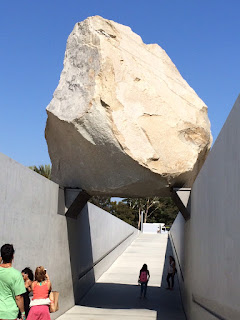Back
in 2002 at the annual AAPG (American Association of Petroleum Geologists)
meeting in Houston, I hosted an exhibit booth for The Society for Organic
Petrology (TSOP). It surprised me that not once, but at least twice, graduate
students came up to me and said how much they appreciated the TSOP online
bibliography of coal/organic petrology, geology, utilization articles. The
students were from schools with limited organic petrology programs or library
resources and found the TSOP bibliography invaluable.
So,
as we get into the summer when many graduate students or junior-senior
undergraduate students may be concentrating on research rather than classes,
here are some organic petrology resources.
Online bibliography:
TSOP reference page at http://tsop.org/references.html lists multiple topics: click on topics to download associated Microsoft Word documents (.docx). Last checked June 2024, many updated in 2021.
Online photomicrograph atlases:
US Geological Survey Organic Petrology
Photomicrograph Atlas: http://energy.usgs.gov/Coal/OrganicPetrology/PhotomicrographAtlas.aspx
(Lots of photos of macerals in coal and those in oil and gas shales.)
Crelling’s Petrographic Atlas of Coals and Carbons: http://www.coalandcarbonatlas.siu.edu/
(includes flyash and chars, cokes)
Indiana Geological Survey Atlas of Coal Macerals: http://igs.indiana.edu/Coal/Macerals.cfm
Books:
Indiana Geological Survey Atlas of Coal Macerals: http://igs.indiana.edu/Coal/Macerals.cfm
Books:
Available in various
formats: Hardcover, paperback, or e-book. This list is not comprehensive, but include
classics or my favorites.
Organic
Petrology by Taylor, G.H., Teichmüller,
M., Davis, A., Diessel, C.F.K., Littke, R., Robert, P., 1998: Gebrüder
Borntraeger, Berlin, 704 pages. (This is the successor to Stach’s Textbook of Coal Petrology, 1982, 3rd ed., by Stach,
E., Mackowsky, M.-Th., Teichmüller,
M., Taylor, G.H., Chandra, D., Teichmüller, R., Murchison, D.G., and
Zierke, F., eds., Gebruder Borntraeger, Berlin, 535 p.)
Petroleum Formation
and Occurrence (2nd. ed.)
by B.P. Tissot and D.H. Welte, 1984, Springer Verlag, Berlin, 699 pages. Not
organic petrology, but much on kerogen chemical evolution in the formation of
petroleum.
Sedimentary
organic matter by Richard V. Tyson, 1995,
Chapman & Hall, London, 615 pages. Excellent comprehensive book on
particulate organic matter with beautiful photos.
A
Petrographic Atlas of Canadian Coal Macerals and Dispersed Organic Matter by
Judith Potter, Lavern Stasiuk, and Alexander Cameron (eds.) (http://www.cscop.org/atlas.php,
available from Geological Survey of Canada, Calgary; now available on CD).
Coal-bearing
Depositional Systems by Claus F. K.
Diessel, 1992, Springer Verlag, 721 pages.
Coal Geology
by Larry Thomas, 2012 (2nd ed.), Wiley-Blackwell,
454 pages. This includes coal origin and petrology, but also exploration,
mining, utilization, and environmental issues.
Applied Coal
Petrology: The role of petrology in coal utilization by Isabel Suárez-Ruiz and John Crelling, 2008,
Elsevier, 388 pages. Petrographic characterization for predicting behavior in
various industrial processes like coke-making (steel industry), combustion,
carbonization.
Professional scientific societies or society
divisions whose activities
concentrate on or include organic petrology (=petrography and geochemistry of
coal and sedimentary organic matter including petroleum source rocks). TSOP, AAPG,
GSA offer student research grant opportunities:
The Society for Organic
Petrology (TSOP; www.tsop.org; besides the references page, there
is a webpage with good links to other organic petrology-related sites: http://www.tsop.org/links/index.htm)
The International
Committee on Coal and Organic Petrology (ICCP; www.iccop.org; this society
is the governing organization for coal petrology terminology and organic
petrographer accreditation)
The Canadian Society for
Coal Science and Organic Petrology (http://www.cscop.org/)
Energy Geology Division, Geological
Society of America (formerly the Coal Geology Division) (http://www.uky.edu/KGS/coal/GSA/;
besides the general GSA student research grant programs, this division
administers two specific research grants)
Energy Minerals Division
(AAPG) (http://emd.aapg.org/; does include uranium)








